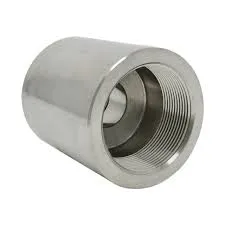-
Cangzhou Yulong Steel Co., Ltd.
-
Phone:
+86 13303177267 -
Email:
admin@ylsteelfittings.com
- English
- Arabic
- Italian
- Spanish
- Portuguese
- German
- kazakh
- Persian
- Greek
- French
- Russian
- Polish
- Thai
- Indonesian
- Vietnamese
- Zulu
- Korean
- Uzbek
- Hindi
- Serbian
- Malay
- Ukrainian
- Gujarati
- Haitian Creole
- hausa
- hawaiian
- Hebrew
- Miao
- Hungarian
- Icelandic
- igbo
- irish
- Japanese
- Javanese
- Kannada
- Khmer
- Rwandese
- Afrikaans
- Albanian
- Amharic
- Armenian
- Azerbaijani
- Basque
- Belarusian
- Bengali
- Bosnian
- Bulgarian
- Catalan
- Cebuano
- China
- China (Taiwan)
- Corsican
- Croatian
- Czech
- Danish
- Esperanto
- Estonian
- Finnish
- Frisian
- Galician
- Georgian
- Kurdish
- Kyrgyz
- Lao
- Latin
- Latvian
- Lithuanian
- Luxembourgish
- Macedonian
- Malgashi
- Malayalam
- Maltese
- Maori
- Marathi
- Mongolian
- Myanmar
- Nepali
- Norwegian
- Norwegian
- Occitan
- Pashto
- Dutch
- Punjabi
- Romanian
- Samoan
- Scottish Gaelic
- Sesotho
- Shona
- Sindhi
- Sinhala
- Slovak
- Slovenian
- Somali
- Sundanese
- Swahili
- Swedish
- Tagalog
- Tajik
- Tamil
- Tatar
- Telugu
- Turkish
- Turkmen
- Urdu
- Uighur
- Welsh
- Bantu
- Yiddish
- Yoruba

Nov . 06, 2024 21:01 Back to list
Exploring ANSI Class 300 Standards for Industrial Applications and Specifications
Understanding ANSI Class 300 A Key Player in Pressure Ratings
In the world of industrial piping systems, understanding pressure ratings is crucial for the safety and efficiency of operations. One significant standard in this realm is ANSI Class 300. This classification pertains to the American National Standards Institute (ANSI) and is particularly relevant for pipes, valves, and fittings in various applications. In this article, we will explore what ANSI Class 300 entails, its specifications, and its implications in industrial contexts.
What is ANSI Class 300?
ANSI Class 300 refers to a pressure class designation that indicates the maximum allowable pressure of piping components at a specified temperature. The pressure ratings are determined based on the material properties, construction standards, and the intended service conditions of the components. ANSI Class 300 components are commonly made from materials such as carbon steel, stainless steel, and other alloys, with the class designation reflecting their capacity to withstand certain pressures without failing.
Pressure Ratings and Temperature
The key feature of ANSI Class 300 is its pressure rating. At the standard temperature of 100°F (38°C), the maximum pressure for ANSI Class 300 piping is rated at approximately 736 psi (pounds per square inch). This rating changes with temperature; for instance, as the temperature increases, the allowable pressure generally decreases due to the weakening of materials. Consequently, engineers must select appropriate materials and components based on the working temperature of the fluids being transported.
Applications of ANSI Class 300
ansi class 300

ANSI Class 300 components are found in a variety of industries, especially those that handle high-pressure fluids, such as petrochemical, oil and gas, water treatment, and power generation. In these sectors, it is essential to select components that can sustain the pressures involved in the processes, as failures can lead to catastrophic outcomes, including leaks, explosions, and environmental damage.
For example, in the oil and gas industry, ANSI Class 300 flanges and valves are often used in drilling and extraction operations. These components must not only endure high pressures but also be resistant to corrosive substances that can be present in crude oil and natural gas. Thus, the choice of materials and adherence to ANSI standards ensure the reliability of the systems.
Benefits of ANSI Class 300 Standards
The ANSI Class 300 standards promote safety and interoperability in piping systems. By adhering to established pressure class ratings, manufacturers provide assurance that their products can perform as expected under specified conditions. This common framework allows engineers and technicians to design systems that incorporate various components while ensuring that they can function together seamlessly.
Moreover, the standardized ratings simplify the selection process for engineers. By understanding these classifications, professionals can make informed choices that enhance the reliability and efficiency of their systems. Standardization also facilitates easier maintenance and troubleshooting since components are recognized universally across the industry.
Conclusion
ANSI Class 300 is a significant designation in the realm of pressure ratings for industrial piping systems. Understanding its implications is essential for engineers, project managers, and safety professionals working with high-pressure applications. As industries continue to evolve and the demand for stringent safety measures increases, adhering to ANSI standards, including Class 300, will play a pivotal role in ensuring operational efficiency and workplace safety. From the oil fields to chemical plants, the significance of ANSI Class 300 cannot be underestimated; it is a foundation upon which safe and effective industrial practices are built.
Latest news
-
ANSI 150P SS304 SO FLANGE
NewsFeb.14,2025
-
ASTM A333GR6 STEEL PIPE
NewsJan.20,2025
-
ANSI B16.5 WELDING NECK FLANGE
NewsJan.15,2026
-
ANSI B16.5 SLIP-ON FLANGE
NewsApr.19,2024
-
SABS 1123 FLANGE
NewsJan.15,2025
-
DIN86044 PLATE FLANGE
NewsApr.19,2024
-
DIN2527 BLIND FLANGE
NewsApr.12,2024
-
JIS B2311 Butt-Welding Fittings LR/SR 45°/90° /180°Seamless/Weld
NewsApr.23,2024











